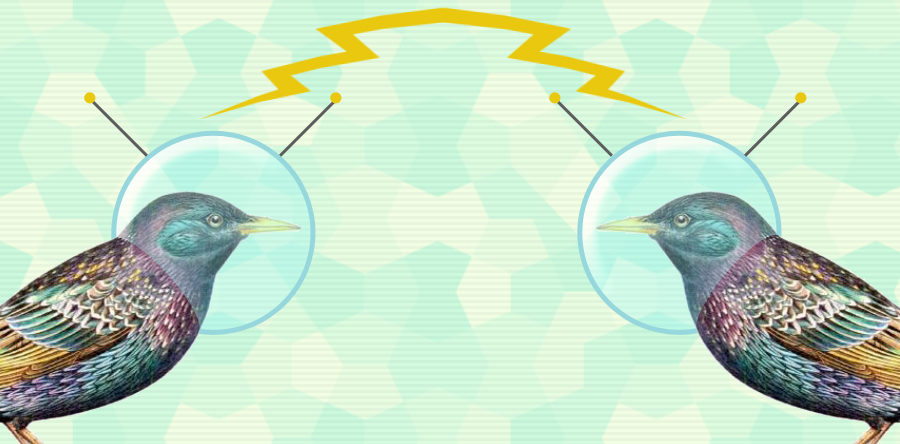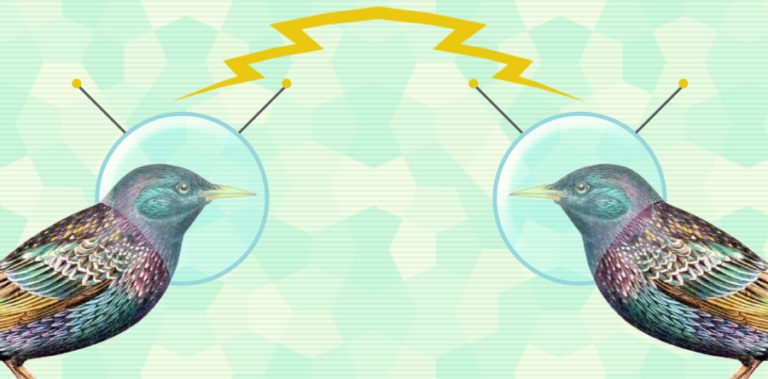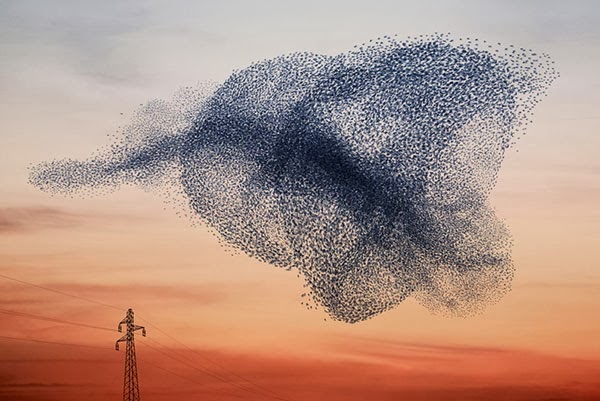
Birds are known for their flocking ability. You’ll notice migrating geese flying in the cliche ‘V’ shape, and pigeons flying in large flurries when moving locations. But if you’ve ever seen a huge group of European Starlings fly, you’ve seen the giant amorphous blobs they create in the sky.
For a long time, scientists have been puzzled over how birds flock. How do they communicate which direction to turn? Is there a leader?
Edmund Selous, an ornithologist, suggested in the 1930s that birds might even be cooperating via telepathy! *cue science fiction sounds*
In the 90s a physicist from Budapest, Tamás Vicsek, came up with this theory:
…which is based on the principle that each bird flies in the same direction as its neighbors. If a bird angles right, the ones next to it will turn to stay aligned. Although this model reproduces many features well—how a flock swiftly aligns itself from a random arrangement, for example—a team of researchers from Italy and Argentina has now discovered that it doesn’t accurately describe in detail how flocks turn. Read more
A new study was done using high-speed cameras to record flocks of starlings flying around a train station in Rome. Motion-tracking software was used on the video to pinpoint the first birds to turn, and monitor how that information disseminated through the group. The idea to turn started with a few birds and ‘flew’ through the group at a speed between 20 and 40 meters per second. In this group of about 400 birds, it took just over a half-second for the whole flock to turn.
The study also showed that the starlings don’t actually copy the direction its neighbors are flying, but how sharply they turn.
Finally, the study shows how this model is “mathematically identical to the equations that describe superfluid helium.”
Read more about the technical and science aspects of this study over at sciencemag.
The next time you see bird flocks in the sky, take a moment to appreciate the science and physics that make it all possible.

